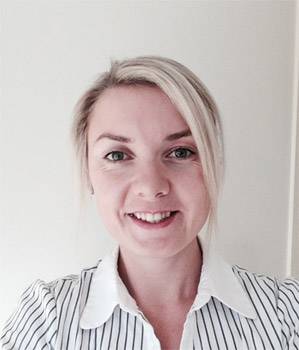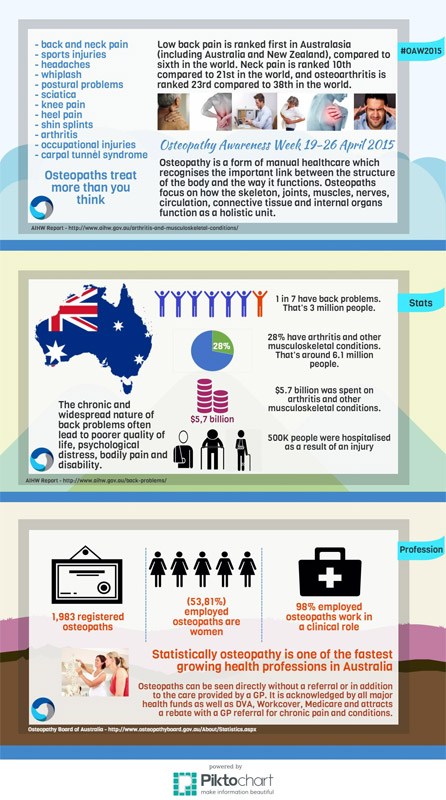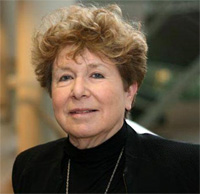Bridie McNulty Osteopathic Treatments Beneficial For Women Suffering From Period Pain Interview

Bridie McNulty Osteopathic Treatments Beneficial For Women Suffering From Period Pain Interview
Recent German studies showed that osteopathic treatment can be beneficial for women suffering from primary dysmenorrhoea. The studies involved 60 women aged between 14 and 33. Only those who were diagnosed with primary dysmenorrhoea by their GP participated in the study.
Six osteopathic treatments over a period of three menstrual cycles were conducted on a group of women. At each treatment session, researchers tested dysfunctional structures and treated based on osteopathic principles. The average pain intensity (API) during menstruation decreased in the osteopathic group by 50%. During the research the most frequent dysfunctions and pains were observed in the area of the pelvic floor, respiratory diaphragm and lumbar spine.
Pain is considered to be a normal symptom during periods, however excessive period pain is called dysmenorrhoea and is considered to be abnormal. Primary dysmenorrhoea refers to painful periods in the absence of any underlying pathology, while secondary dysmenorrhoea is painful menstruation associated with a pelvic pathology, such as endometriosis. Dysmenorrhoea is a very common problem and can occur in up to 50% of women. Several studies suggest that severe period pain is associated with absence from school or work and restricts other activities of daily life.
A study of 1000 girls aged 16-18 years in Canberra found that 21% of the girls had severe pain with periods and 26% had missed school because of period symptoms.
Primary dysmenorrhoea is commonly treated by simple analgesic, however pain relief may be inadequate for some women, or side effects may not be well tolerated. Studies suggest that between 30-50 percent of the adult population use some form of complementary medicine including osteopathic treatments – a combination of traditional methods and modern scientific philosophies.
An osteopath will make sure that there are no restrictions in the movement within the joints of the spine and pelvis, which can lead to period pain, release any tension from the muscles of the spine, pelvic floor and pelvis, which in turn will improve the blood and nerve supply to the organs. They can also treat any muscular restriction of the uterine walls so as to help reduce cramping.
Osteopaths can also help to prepare exercise and stretching programs, and provide advice on posture and stress management for improved general health and wellbeing.
Interview with Bridie McNulty
Bridie has a Bachelor of Science (Clinical Science) and a Masters in Health Science (Osteopathy). Bridie is passionate about osteopathy's holistic approach to health care and she enjoys treating patients of all ages. She has developed a particular interest in women's health and paediatrics, completing her masters in the osteopathic treatment of period pain. She has undertaken further studies in paediatrics and obstetrics and finds the treatment of mothers and babies one of the most rewarding aspects of osteopathy, as treatment is gentle, yet very effective.
Question: What originally inspired this German study?
Bridie McNulty: According to studies almost 75 percent of young women and 25 to 50 percent of adult women experience pain and discomfort during their period. Severe period pelvic pain can lead to absence from work, interfere with everyday life and causes stress and discomfort.
Period pain sometimes is an uncomfortable and sensitive topic for conversation, however it affects women's health and wellbeing and therefore, deserves increased attention. A British survey of 600 women conducted last year found that 10 percent were regularly bedridden by their period pains. Four out of 10 women claimed that the period pain stops them from concentrating on work and affects their career. A third of women added that the constant period pain makes them feel depressed.
Studies suggest that between 30-50 percent of the adult population use some form of complementary medicine including osteopathic treatments. Given that period pain presents a problem for so many women, it is important the research is carried out on the potential benefits of osteopathic treatments for helping period pain.
 Question: How will this study benefit Australian women?
Question: How will this study benefit Australian women?
Bridie McNulty: The results of the study can be applied to women worldwide. It doesn't matter in which country the study has been conducted. Osteopathy is government regulated profession in Australia and the treatments are available to the vast majority of population. They are covered by private health insurance and under Medicare Chronic Disease management plan. We hope that the results of the German research will raise awareness about osteopathy in society and will explain the benefits of the treatments.
Question: Can you talk about the correlation between period pain and osteopathic treatments?
Bridie McNulty: Many patients come to osteopaths seeking relief from pain, osteopathy gives an additional treatment option for those suffering from period pain. Many patients continue to use a combination of traditional methods and complementary medicine.
Question: Can you explain what an Osteopath does?
Bridie McNulty: Osteopathy is a manual healthcare which recognises the important link between the structure of the body and the way it functions. Osteopaths focus on how the skeleton, joints, muscles, nerves, circulation, connective tissue and internal organs function as a holistic unit.
Using skilled evaluation, diagnosis and a wide range of hands-on techniques, osteopaths can identify important types of dysfunction in your body. Osteopathic treatment uses techniques such as stretching and massage for general treatment of the soft tissues (muscles, tendons and ligaments) along with mobilisation of specific joints and soft tissues.
During your first osteopathic consultation your osteopath will ask questions about your problem and symptoms. They may also ask about your medical history, any medications you are taking, as well as factors that may not appear to be directly related to your problem. If your medical condition changes between osteopathic appointments you should tell your osteopath at your next consultation.
Question: What techniques are used in osteopathy to help with the period pain?
Bridie McNulty: An osteopath will make sure that there are no restrictions in the movement within the joints of the spine and pelvis, which may contribute to period pain. Release any tension from the muscles of the spine, pelvic floor and pelvis, which in turn will improve the blood and nerve supply to the organs. They can also treat any muscular restrictions within the abdomen.
Osteopaths can also help to prepare exercise and stretching programs, and provide advice on posture and stress management for improved general health and wellbeing.
Question: How can these techniques reduce cramping?
Bridie McNulty: Osteopathic techniques aims to reduce cramping by enhancing the circulation of fluid by rest to relieve congestion in order to influence the concentration of hormone like substances (prostaglandins) that may be the cause of abnormal uterine contractions and increased sensitivity to pain.
Question: How often and when should we visit an Osteopath?
Bridie McNulty: It really depends on the health issue we are dealing with, it's very individual. Your initial consultation may last up to one hour. This will enable your osteopath to take a thorough history, examine and depending upon your condition, treat you. Follow-up treatments are usually shorter, their frequency will also depend on the nature of your problem.
Question: Can you talk about the patients you see on a daily basis?
Bridie McNulty: I see a variety of patients on every day basis. They are of different age and sex and for various conditions including back and neck pain, sports injuries and headache. I also see many patients for women's health issues including period pain and pregnancy.
Question: What motivated you to study to become an Osteopath?
Interview by Brooke Hunter
Have You Seen This?
MORE









